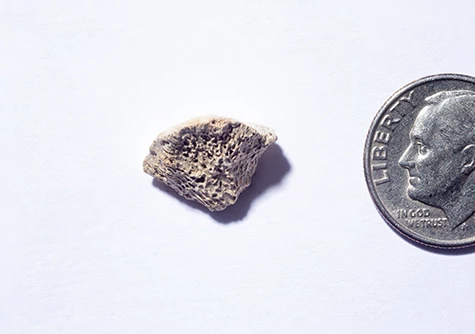We know that humans have been sharing their lives with dogs for thousands of years, but there remain plenty of blanks to fill in regarding this relationship and the way it spread throughout the world. Scientists at the University of Buffalo have found a very useful clue concerning the migration of canines to the Americas, in the DNA of an ancient bone fragment said to be the oldest known dog remains in the region.
The discovery was actually an inadvertent one, with scientists conducting DNA sequencing of old bone fragments dug up years ago in Alaska, including one they thought to be from a bear. The analysis revealed that the bone was in fact part of a femur belonging to a dog that lived in the region about 10,150 years ago. The researchers say this is thought to be the oldest confirmed remains of a domestic dog in the Americas.

Further analysis of the mitochondrial genome revealed that the dog descended from a group of Siberian dogs, belonging to a separate lineage that diverged as long as 16,700 years ago. This is around the time that humans are thought to have been migrating along a coastal route in southeast Alaska.
“We now have genetic evidence from an ancient dog found along the Alaskan coast," says senior author of the study Charlotte Lindqvist. "Because dogs are a proxy for human occupation, our data help provide not only a timing but also a location for the entry of dogs and people into the Americas. Our study supports the theory that this migration occurred just as coastal glaciers retreated during the last Ice Age."
Among the other interesting insights gleaned by the analysis was that the dog likely sustained itself largely on a marine diet, feeding on fish, and scraps from seals and whales. But the findings are as much about the history of human migration as they are about the ancient paw prints of our best friend.

“This all started out with our interest in how Ice Age climatic changes impacted animals' survival and movements in this region,” Lindqvist says. “Southeast Alaska might have served as an ice-free stopping point of sorts, and now – with our dog – we think that early human migration through the region might be much more important than some previously suspected.”
“Our early dog from Southeast Alaska supports the hypothesis that the first dog and human migration occurred through the Northwest Pacific coastal route instead of the central continental corridor, which is thought to have become viable only about 13,000 years ago,” adds Flavio Augusto da Silva Coelho, a PhD student in biological sciences at the University of Buffalo, and a first author on the study.
The research was published in the journal Proceedings of the Royal Society B.
Source: University of Buffalo





